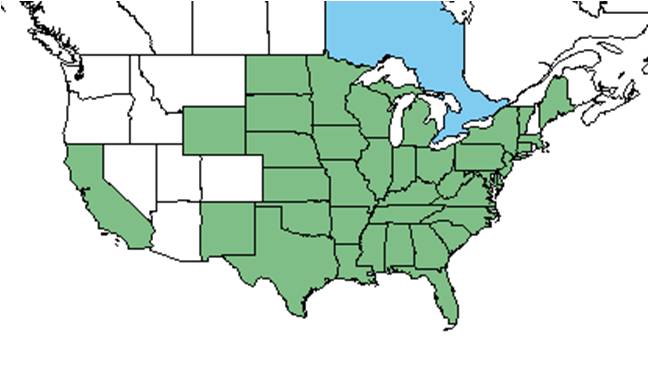Difference between revisions of "Oenothera laciniata"
KatieMccoy (talk | contribs) |
KatieMccoy (talk | contribs) |
||
| Line 25: | Line 25: | ||
==Ecology== | ==Ecology== | ||
===Habitat=== <!--Natural communities, human disturbed habitats, topography, hydrology, soils, light, fire regime requirements for removal of competition, etc.--> | ===Habitat=== <!--Natural communities, human disturbed habitats, topography, hydrology, soils, light, fire regime requirements for removal of competition, etc.--> | ||
| + | In the Coastal Plain in Florida and Georgia, ''O. laciniata'' occurs in shrub bogs, pine flatwoods, and pine savannas. It is observed to be a ruderal species and has been found in disturbed areas such as sandy vacant lots, moist roadsides, fallow fields, and railroad beds (FSU Herbarium). Soil types include sandy loam, loam, and loamy sand (FSU Herbarium). Associated species include ''Drosera, Calopogon, Briza'', and ''Cerastium'' (FSU Herbarium). | ||
| + | |||
===Phenology=== <!--Timing off flowering, fruiting, seed dispersal, and environmental triggers. Cite PanFlora website if appropriate: http://www.gilnelson.com/PanFlora/ --> | ===Phenology=== <!--Timing off flowering, fruiting, seed dispersal, and environmental triggers. Cite PanFlora website if appropriate: http://www.gilnelson.com/PanFlora/ --> | ||
===Seed dispersal=== | ===Seed dispersal=== | ||
Revision as of 13:51, 10 November 2015
| Oenothera laciniata | |
|---|---|
Error creating thumbnail: Unable to save thumbnail to destination
| |
| Scientific classification | |
| Kingdom: | Plantae |
| Division: | Magnoliophyta - Flowering plants |
| Class: | Magnoliopsida – Dicotyledons |
| Order: | Myrtales |
| Family: | Onagraceae |
| Genus: | Oenothera |
| Species: | O. laciniata |
| Binomial name | |
| Oenothera laciniata Hill | |

| |
| Natural range of Oenothera laciniata from USDA NRCS Plants Database. | |
Common name: cutleaf evening primrose
Contents
Taxonomic notes
Description
Distribution
Ecology
Habitat
In the Coastal Plain in Florida and Georgia, O. laciniata occurs in shrub bogs, pine flatwoods, and pine savannas. It is observed to be a ruderal species and has been found in disturbed areas such as sandy vacant lots, moist roadsides, fallow fields, and railroad beds (FSU Herbarium). Soil types include sandy loam, loam, and loamy sand (FSU Herbarium). Associated species include Drosera, Calopogon, Briza, and Cerastium (FSU Herbarium).
Phenology
Seed dispersal
Seed bank and germination
Fire ecology
Pollination
The following Hymenoptera families and species were observed visiting flowers of Oenothera laciniata at Archbold Biological Station (Deyrup 2015):
Vespidae: Polistes dorsalis hunteri
Use by animals
Diseases and parasites
Conservation and Management
Cultivation and restoration
Photo Gallery
References and notes
Deyrup, M.A. and N.D. 2015. Database of observations of Hymenoptera visitations to flowers of plants on Archbold Biological Station, Florida, USA.